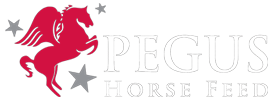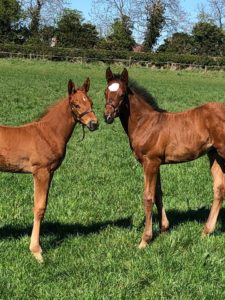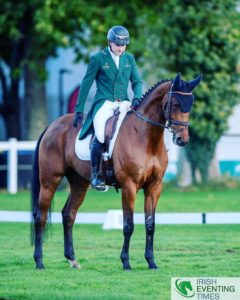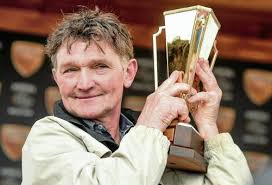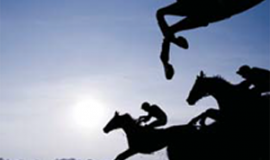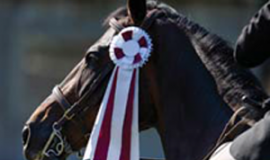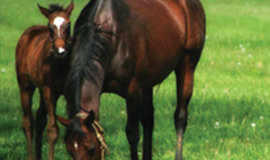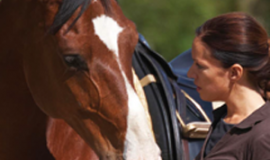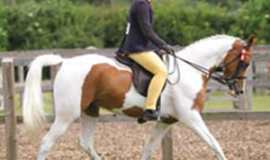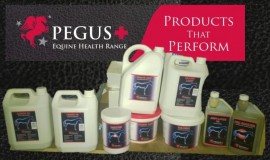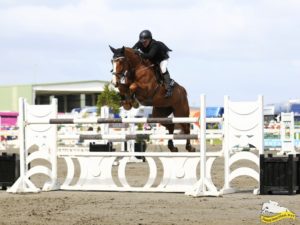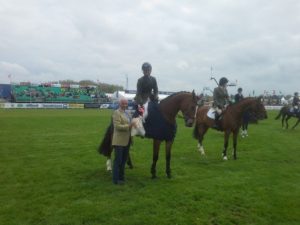When we buy roughage it is important to purchase a quality that suits the particular horses we have. Ponies and horses that tend to get fat should be fed forage with a lower energy content than that for young horses, broodmares and horses in training. Whether we choose hay or haylage is of major concern, but nutrient content and hygienic quality will always be crucial.
In rations for horses there should be at least 1.5 kg forage dry matter per 100 kg body weight. This is important both for maintaining normal digestive functions and for the horse’s well-being. Unless it has enough chewing-time, the horse will not feel satiated and happy.
Select forage with an energy content in the lower range for horses that tend to get fat. Such forages will give them enough chewing time without creating a too high energy intake. Horses in training, on the other hand, should preferably have roughages with a higher energy content. By feeding the best roughages to trained horses, we can cover more of the requirements from the roughage, and limit the overall amount of concentrate in the ration. When energy requirements are high, this can have a positive effect on health and well-being and also, in some cases, lead to better performance.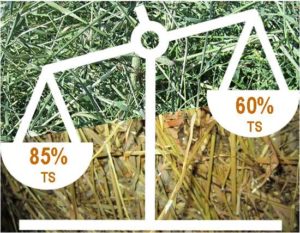
Hay v Haylage
Hay is dry (about 15% water and 85% dry matter, DM), while haylages for horses may vary widely in water content (dry matter between 60% and 75% is common). Since it is the dry matter and not the water which contains the energy and the nutrients, we must always compare the nutrient content of different batches of haylage per kg dry matter, not per kg of the feed. In the same way, all assessment of what will be an appropriate amount of roughage for a horse should be done on a dry matter basis, and not as kg of roughage feeds with varying water content.
A practical example
From the discussion above it should be obvious that a horse getting 7 kg of hay will get more forage dry matter than a horse fed 7 kg of haylage. The difference depends on how moist the haylage is (DM%). Let us assume that the hay has 85% and the haylage 60% DM:
7 kg hay equals 7 x 0,85 = 5.95 kg dry matter.
7 kg of the haylage equals 7 x 0,60 = 4.2 kg dry matter.
The example shows that the horse that was fed 7 kg hay got almost 2 kg dry matter more than the horse that was fed 7 kg haylage. This also means that the horse receiving haylage with 60% DM had to be fed about 10 kg haylage for the amount of roughage dry matter in the ration to be equal to a ration with 7 kg hay!
Be sure to buy roughage that is analyzed
A roughage analysis is very helpful when you are deciding how to feed your horses. As shown above, it is also vital to consider the nutritional content on a per kilogram dry matter basis. Otherwise you can pay for expensive water with no nutritional value!
When you get the calculations right, either hay or haylage will make great rations for your animals. Below are some general recommendations on what quality of roughage is best suited for the different types of horse.
Recommendations:
Ponies and horses on low activity levels, with a known tendency to grow fat: A suitable roughage will have maximum 8.3 MJ of digestible energy and preferably not more than 112 grams crude protein per kg DM. With such quality, we can give the horse a fair amount of roughage without expecting it to grow obese.
Ponies and horses at maintenance or on light exercise levels: A roughage quality of 8.4 to 9.4 MJ and preferably not more than 133 g crude protein per kg DM is suitable.
Ponies and horses on light to moderate exercise levels: A roughage quality with 9.5 to 11.7 MJ and preferably not more than 158 grams of crude protein per kg DM.
Ponies and horses in hard training: Horses in hard training have a high demand for energy. A roughage quality with at least 12.0 MJ of digestible energy and preferably not more than 175 grams of crude protein per kg DM is suitable. With appropriate amounts (at least 1.5 kg DM per 100 kg body weight!) horses will receive a significant proportion of their energy requirement from roughage and we can use PC-Horse to calculate the amounts of concentrate necessary to make a balanced ration.
Young horses and broodmares: A suitable roughage will have at least 10.7 MJ and more than 128 grams of crude protein per kg DM. For young horses and mares in late gestation it is especially important to ensure that the content of crude protein is not too low.
For more information about feeding your horse and arranging a feed plan : Contact Pegus Horse Feed
www.pegus.ie info@pegus Tel 0044 7710883088
